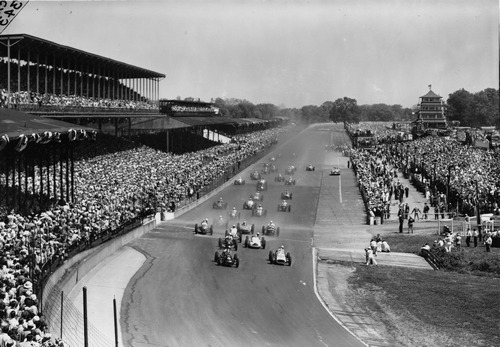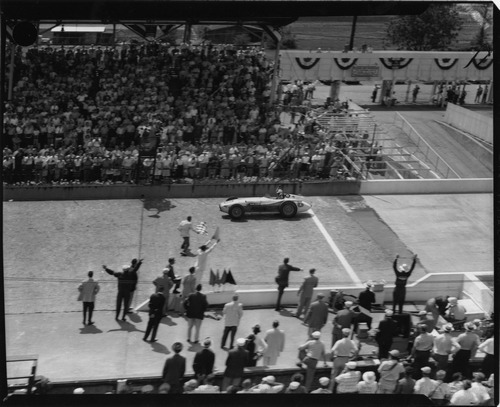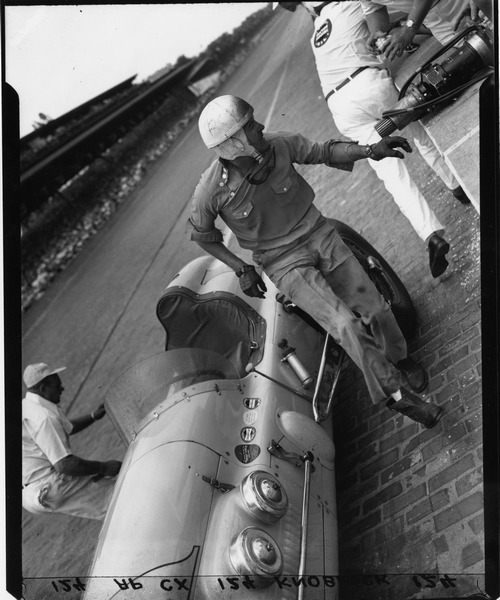
As Formula One fans prepare for one of the most prodigious weekends of the season, many are also preparing for an equally prestigious race that will happen just hours after the conclusion of the Monaco Grand Prix: The 100th Indianapolis 500. Apart from the event featuring open wheel cars, you may think that the Indianapolis 500 is unrelated to Formula One, but the event has been more important to Formula One’s history than you may think.




Two out of the three events in motorsport’s Triple Crown are scheduled to take place this Sunday. The day will start with most prestigious Formula One race on the calendar: the Monaco Grand Prix. Only a few hours after the race concludes, fans will get to witness the most prestigious motor racing event in motorsport: the Indianapolis 500. This year’s event is bit special compared to past years, as it marks the 100th time that the event has been held. What many people don’t know about the event is that it was originally a part of the Formula One World Championship.
The annual race was first held in 1911 and was sanctioned by the American Automobile Association. It took 6 hours and 42 minutes for the race winner, Ray Harroun, to arrive at the finish line. The officials continued the race until it reached 7 hours and 23 minutes, at which point the race was ended and 14 cars were scored as still running the in the race.
The race was held every year and was always a 500 mile race distance, with the exception of 1916’s 300 mile race distance. The race wasn’t held in 1917 or 1918 as a result of World War I and this was also the case from 1942 to 1945 because of World War II.
After the birth of Formula One in 1950, the Indianapolis 500 was added to the list of races in the season, meaning that the participants would score points toward the Formula One World Championship title. As a result, the winner of the 1950 event, Johnnie Parsons, was ranked sixth in the Formula One World Championship at the end of the season, despite having never driven in any of the other race in the season.
Following the 1955 disaster in the 24 Hours of Le Mans, the American Automobile Association dropped their motorsport board and the Indianapolis 500 was governed by the United States Auto Club from that point forward. Despite the change in the association which sanctioned the event, it was still on the Formula One calendar. This was the case until the 1961 event, when it was removed from the championship.
Having never really caught on in Europe, the entry list for the Indianapolis 500 consisted mostly of American racing drivers. Alberto Ascari was the only Formula One driver to have ever competed in the event for World Championship points, having run 40 laps during the 1952 Indianapolis 500 until he spun his Ferrari. Although he never competed in the event while it was in the Formula One championship, racing legend Jim Clark was noted for taking the pole position in the 1964 Indianapolis 500 and the race victory in the 1965 event. Formula One legend Graham Hill also won the event the following year, eventually being the only driver to complete the Triple Crown of Motorsport.
The Indianapolis 500 can also be credited with the birth of the modern IndyCar Series. In 1994, the owner of the Indianapolis Motor Speedway created an open-wheel racing series called the Indy Racing League (IRL). The series’ crown jewel event would be the Indianapolis 500 and the remaining races on the calendar were scheduled to conflict with the decreasing popular CART series so that the drivers could not race in both events. In 1996, the Indianapolis 500 was sanctioned by the IRL and 25 of the 33 race entry positions were reserved for drivers of the IRL, preventing many CART drivers from racing in the event.
The IRL gained popularity and many of the CART teams moved to the series. This resulted in the bankruptcy of CART and the rebranding for the series. In 2008, the IRL and CART merged into a single series called the IndyCar series.
Although Formula One didn’t have the largest impact on the Indianapolis 500 and vice versa, there was an era where the most prestigious event in the motorsport world was considered a Formula One event.
Monaco: Brilliant Or Rubbish?
McLaren’s Monaco Miracle
Weekend Summary: 2015 Monaco Grand Prix